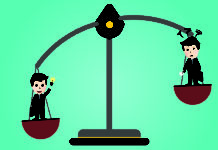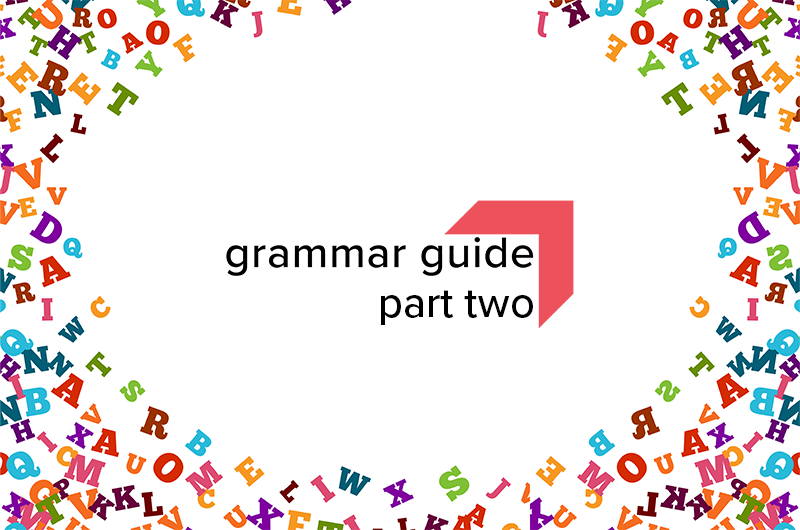What’s verb tense for, and how can the Thai language have just one, while Italian has 21? While the subject and object of a sentence help us understand who or what we are talking about, verb tense helps us understand when the action or state of being we are talking about happened.
We English speakers are fortunate in that we have considerably fewer verb tenses than Italian (but a few more than Thai). While in Thai, time is explicitly specified with adverbs like tomorrow, in Italian, time (and some extra details) is implied through verb tense.
Where does English verb tense fit in? Depending on who you’re talking to, English has either two or six verb tenses. The difference being that four tenses use of the modal (or auxiliary) verb to be plus another participle, whereas there other two are just verbs which need no help in expressing their place in time. If this all sounds very familiar, you may want to skip to the last section that explains when each verb tense should be used (plus our tribute to the dying subjunctive mood).
Right Here, Right Now — Simple Present Tense
The present tense talks about, unsurprisingly, the present. Like past and future, the simple present tense can be split into plain and progressive forms. The plain form looks like this:
I want to go out and have some fun!
She looks at him like he’s a piece of meat.
The progressive form uses to be with the ‘ing’ form of the verb:
I am going out, and you are staying in!
I am trying to sleep, but he is singing.
Where Was I? — Simple Past Tense
The past tense talks about, you guessed it, the past. Let’s look at the plain form:
I went to the dentist and got a filling.
I ran a half marathon and felt particularly tired after finishing.
Now onto the progressive:
While I was running towards the finish line, he was fumbling with the camera lens.
They were inspecting the crime scene, and he was making his escape.
The Grammarian Will See You Now — Simple Future Tense
The plain future tense is a combination of the auxiliary verb to be (or shall) and the basic form of the verb:
I will get a haircut after our meeting.
He will regret selling his Bitcoin soon.
The progressive future needs another auxiliary verb to function; this time will is joined by be along with present participle (or ‘ing’ form):
This time next week, I will be sitting on a beach with a cold drink and a book.
Fitting In
OK, so we know what the verb tenses are in English, but when do we use them? For the most part you can follow your instinct (past is for past events, present for present, and future for future); however, some subtleties can help us change how the information is received.
Correct Use of Present
The simple present tense is used for things that are true now, and for habitual activities.
I pick up the milkshake and take a sip — true in the moment.
I attend all of Gillingham FC’s home matches — not happening right now, but is something that happens every weekend of the football season.
In contrast, the progressive present conveys something similar to our milkshake example:
He is running for the bus, because he is late — this is a continuous action happening in the moment.
I am driving right now, can I call you back? — another action is happening as the words are written/spoken.
Beware, sometimes the present progressive can feel strangely like the future:
I am thinking of buying a house — the act of buying a house will take place in the future; however, the thoughts of buying a home are happening in the present.
There’s also a strange phenomenon called the historical present; this form uses the present tense (both simple and progressive) to talk about events that happened in the past. Famously, BBC broadcaster (and equal-pay belittler) John Humphries expressed a deep disliking of the usage of the historical present. We think it adds a bit of immediacy to the topic, and, after all, memory is not a perfect mental reproduction of an event but a replaying of what we believed happened in the moment we recall it.
Finally, you can use the plain present to talk about scheduled events in the future:
The play opens in spring 2019.
Correct Use of Past
We usually use the plain past tense (went, bought, sold) for talking about general events in the past that have finished. The progressive form (was running, were speaking), on the other hand, is great for introducing events in relation to one another:
I learnt how to tie my shoelaces, and the teacher spoke about how useful this skill would be — these events appear to be happening one after the other.
I was learning how to tie my shoelaces while the teacher was speaking — these events are happening simultaneously, and by choosing this verb tense, we could insinuate that the student is learning something useful, just not what the teacher had in mind.
Correct Use of Future
The plain and progressive future tenses differ very little:
I will dance until I drop at the ball tomorrow night.
I will be dancing until I drop at the ball tomorrow night.
As you’ll probably agree, these sentences are interchangeable. Some argue that the progressive form (will be dancing) feels a little more immediate.
It’s worth noting that we can follow a future clause with a present clause if we’re talking about the same period of time:
I will be dancing with my date while you’re at home crying into your pillow.
Tributes to Our Fallen Friend
If only the subjunctive mood were easier to understand… You may be looking at that sentence wondering why we’ve used were as opposed to was; the subjunctive mood is used (very rarely) in English when we want to talk about wishes, suggestions, commands or conditions which are contrary to the fact. It’s worth noting that there’s almost always another way to write a subjunctive sentence using a more common mood. In the present and future, you’ll often see the were as the verb indicating the subjunctive mood:
I wish it were still in use — here’s a wish that contradicts the fact that it’s no longer in use. File under: SUBJUNCTIVE!
In the past, you’ll most likely see the auxiliary verb had along with a past participle:
If he had called before the fire began, the books could have been saved — here’s a condition that’s in the past, and it’s contrary to the fact (the fact being he didn’t call). File under: SUBJUNCTIVE!
Think you know subjunctives? Think again! There’s plenty more where that came from. We insist each reader join us next time for more verb talk. Did you spot the subjunctive?
Want to keep up to date with all our study tips? Sign up to the Aspiring Accountants’ weekly newsletter and let us do the legwork for you. You can check out part one of our writing guide here.


















